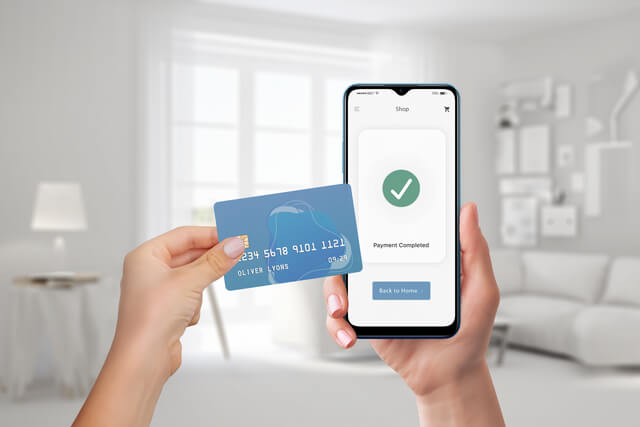
You’ve got a fantastic product, solid brand awareness, and a seamless online store. So, nothing is standing in the way of your customers snapping up your products, right? Not so fast! If your checkout process frustrates customers, they might bail before completing their purchase — leaving them stranded in the middle of the customer’s journey, and you as an e-commerce business at square one. On the contrary, a smooth, hassle-free checkout with the right payment methods doesn’t just make a sale, it keeps them coming back for more.
With countless payment methods worldwide, and each country favouring different ones, understanding our audience’s preferences is more than critical in the crowded online marketplace. A little insight into each method goes a long way in making sure your checkout experience is as frictionless as possible. Here, we explore common modes of payment, in addition to key considerations when finalising your list. See what you and your consumers have to gain from the top payment methods here.
Understanding Available Payment Methods

There are countless payment methods out there — probably hundreds. Which ones are popular and widely used can vary a lot depending on the country, culture and available technology.
Credit and Debit Cards
Credit and debit cards are easily among the most popular payment methods in e-commerce. They’re generally safe, simple to use and incredibly convenient for online shopping, requiring customers to only key in (or even scan) their card details. The only difference is that credit cards borrow from the bank, while debit cards deduct directly from existing funds in your bank account. This means that while credit cards endow customers with more purchasing power, it comes at a price for the retailer, as the processing fee is typically much higher than that of a debit card.
Bank Transfers
The transfer of funds from one account to another is called a bank transfer. In e-commerce, this usually entails transferring money from a customer’s bank account to the business’s account. Some transfers, like wire transfers, are processed quickly, while others might take a few hours or days due to clearinghouses, processing schedules and additional checks. Bank transfers are often used for larger purchases because of their higher level of security, even though they can be slower compared to other payment methods.
Cash on Delivery (COD)
It might seem like cash on delivery (COD) is at odds with the convenience of online shopping, but surprisingly, it still holds appeal for many. One advantage is that it doesn’t require customers to have a credit or debit card, making it accessible to a broader audience. Additionally, it’s simpler to set up and bypasses credit card processing fees for sellers. Nevertheless, many customers may turn a blind eye to COD because of their lower convenience, slower speed and lack of potential rewards like cashback, causing benefits of online payment modes to outweigh the traditional charm of paying in cash upon delivery.
Digital Wallets
Digital wallets refer to the software applications, such as financial transaction apps, that store your payment details — credit and debit cards, bank accounts, loyalty and reward cards, and more. Although relatively new, digital wallets are poised for significant growth: about 41 percent of consumers say they’re likely to use digital wallets for transactions in the coming year. Popular options like Amazon Pay, Apple Pay and Google Pay are leading the charge. Digital wallets are also known for their enhanced security and efficiency, enabling quick transactions authenticated with passcodes, biometrics, SMS and other methods.
Buy Now, Pay Later (BNPL)
Buy Now, Pay Later (BNPL) has been gaining momentum for its flexibility, allowing customers to spread out payments over time with no interest, unless a payment is missed. This short-term instalment loan is increasingly adopted by retailers because it offers a similar deferred payment option as credit cards but doesn’t require customers to qualify for one. With proper management, BNPL can be a reliable option for consumers to manage their finances. However, it’s worth noting that merchants may face substantial processing fees with each transaction completed.
Cryptocurrency
Bitcoin has always been designed as a means of payment that enables users to transact peer-to-peer without the need for intermediaries, like banks. In recent years, cryptocurrencies have evolved into their own ecosystem and are becoming more recognised by e-commerce business owners as not only viable but also more private, secure and accessible to a global audience. This is because cryptocurrencies use blockchain technology, which ensures transparency, security and immutability by recording transactions on a decentralised ledger resistant to tampering and fraud. Consumers may also seek to pay with cryptocurrency for their lower fees compared to credit cards and fast transaction ability.
Factors to Consider When Choosing Payment Methods

With an overview of these top payment methods, you’re now in a better position to choose which ones to integrate into your e-commerce business. While this decision is less straightforward than one might initially think, these key considerations will help guide you towards making the right choice.
Target Audience
Consider the demographics and psychographics of your target audience. Payment preferences and availability vary by region, and their needs and behaviours may be influenced by cultural factors and lifestyle. Identify your target audience and choose the payment method that best fits their profile.
Transaction Fees
Payment processing fees might not affect your consumers directly, but they can have a big impact on your business’s profits. Compare fees across various payment methods to determine if integrating a particular option is actually worth the cost. High transaction fees can quickly stack up and erode your profit margins, so it’s imperative that you choose methods that align with your financial goals.
Safety and Security
Security is incredibly crucial with the rise in fraudulent transactions. As e-commerce expands, the risk of security issues is expected to grow even further. 44% of respondents in a survey by Paysafe say that security is their top consideration when choosing online payment methods.
Compatibility
The compatibility of your e-commerce platform can be influenced by factors such as platform limitations, currency requirements and customisation needs. Ensure that your e-commerce platform is equipped to support transactions using payment methods you wish to include.
Customer Experience
Is your checkout process fast and simple enough for a user-friendly experience? Remember, your customer is only one step away from payment. Don’t lose them to inadequate mobile-friendliness, confusing navigation or delays. Make sure the payment method is seamless and easy to use across all devices.
Global Reach
Your chosen payment method may or may not support international transactions. While it’s not mandatory, this could be important for businesses looking to expand overseas. The same applies to currency conversion, multi-currency support and cross-border payment capabilities.
Comparison Table
| Payment Method | Pros | Cons | Best For | Considerations |
| Credit and Debit Cards | Widely adopted, easy to use, convenient | Credit cards incur higher processing fees for merchants; debit cards may limit purchasing power | Everyday purchases, broad audience | Ensure secure handling of card details |
| Bank Transfers | High security, good for large transactions | Slower processing time, requires more effort from customers | High-value items, B2B transactions | Consider platform support and fees |
| Cash on Delivery (COD) | No need for cards, simple setup, no fees, instant payment upon delivery | Inconvenient, no rewards, generally slower | Regions with limited card access | May deter tech-savvy customers |
| Digital Wallets | High security, fast transactions, growing adoption | Requires smartphone, may involve setup complexity | Tech-savvy consumers, mobile shoppers | Compatibility with devices and platforms |
| Buy Now, Pay Later (BNPL) | Flexible payments, no interest if paid on time | Higher processing fees for merchants; potential for consumer debt | Younger demographics, budget-conscious consumers seeking financial flexibility | Evaluate customer discipline and fees |
| Cryptocurrency | Peer-to-peer, secure, global reach, low fees | Volatility, limited adoption, requires some tech knowledge | Privacy-focused consumers, global reach | Understand legal implications and volatility |
Final Thoughts
We’ve covered many payment methods here, but naturally, not every e-commerce store offers them all. In fact, most businesses keep a balanced selection, giving customers the freedom to choose without overwhelming them. Beyond this article, a great way to figure out what’s best for your business is to chat with professionals who know the ropes in setting up various payment methods and future-proofing your shop. That’s us at IXEN Interactive. Speak to our team today and find the perfect e-commerce solution for your business with us!